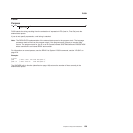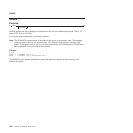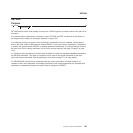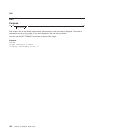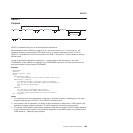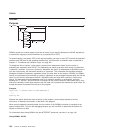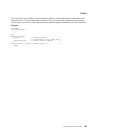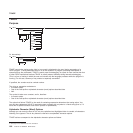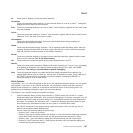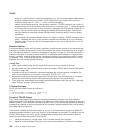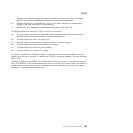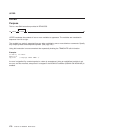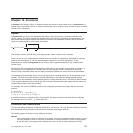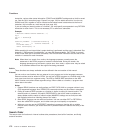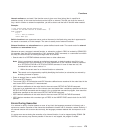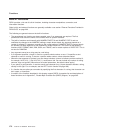All Traces (that is, displays) all clauses before execution.
Commands
Traces all commands before execution. If the command results in an error or failure
4
,tracing also
displays the return code from the command.
Error Traces any command resulting in an error or failure
4
after execution, together with the return code
from the command.
Failure
Traces any command resulting in a failure
4
after execution, together with the return code from the
command. This is the same as the Normal option.
Intermediates
Traces all clauses before execution. Also traces intermediate results during evaluation of
expressions and substituted names.
Labels
Traces only labels passed during execution. This is especially useful with debug mode, when the
language processor pauses after each label. It also helps the user to note all internal subroutine
calls and transfers of control because of the SIGNAL instruction.
Normal
Traces any command resulting in a negative return code after execution, together with the return
code from the command. This is the default setting.
Off Traces nothing and resets the special prefix options (described later) to OFF.
Results
Traces all clauses before execution. Displays final results (contrast with Intermediates, preceding)
of evaluating an expression. Also displays values assigned during PULL, ARG, and PARSE
instructions. This setting is recommended for general debugging.
Scan Traces all remaining clauses in the data without them being processed. Basic checking (for
missing ENDs and so forth) is carried out, and the trace is formatted as usual. This is valid only if
the TRACE S clause itself is not nested in any other instruction (including INTERPRET or
interactive debug) or in an internal routine.
Prefix Options
The prefixes ! and ? are valid either alone or with one of the alphabetic character options. You can specify
both prefixes, in any order, on one TRACE instruction. You can specify a prefix more than one time, if
desired. Each occurrence of a prefix on an instruction reverses the action of the previous prefix. The
prefix(es) must immediately precede the option (no intervening blanks).
The prefixes ! and ? modify tracing and execution as follows:
? Controls interactive debug. During usual execution, a TRACE option with a prefix of ? causes
interactive debug to be switched on. (See “Interactive Debugging of Programs” on page 411 for full
details of this facility.) While interactive debug is on, interpretation pauses after most clauses that
are traced. For example, the instruction TRACE ?E makes the language processor pause for input
after executing any command that returns an error (that is, a nonzero return code).
Any TRACE instructions in the program being traced are ignored. (This is so that you are not
taken out of interactive debug unexpectedly.)
You can switch off interactive debug in several ways:
v Entering TRACE O turns off all tracing.
v Entering TRACE with no options restores the defaults—it turns off interactive debug but continues
tracing with TRACE Normal (which traces any failing command after execution) in effect.
v Entering TRACE ? turns off interactive debug and continues tracing with the current option.
v Entering a TRACE instruction with a ? prefix before the option turns off interactive debug and
continues tracing with the new option.
TRACE
Chapter 13. Keyword Instructions 167



